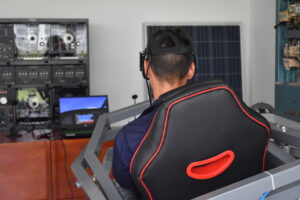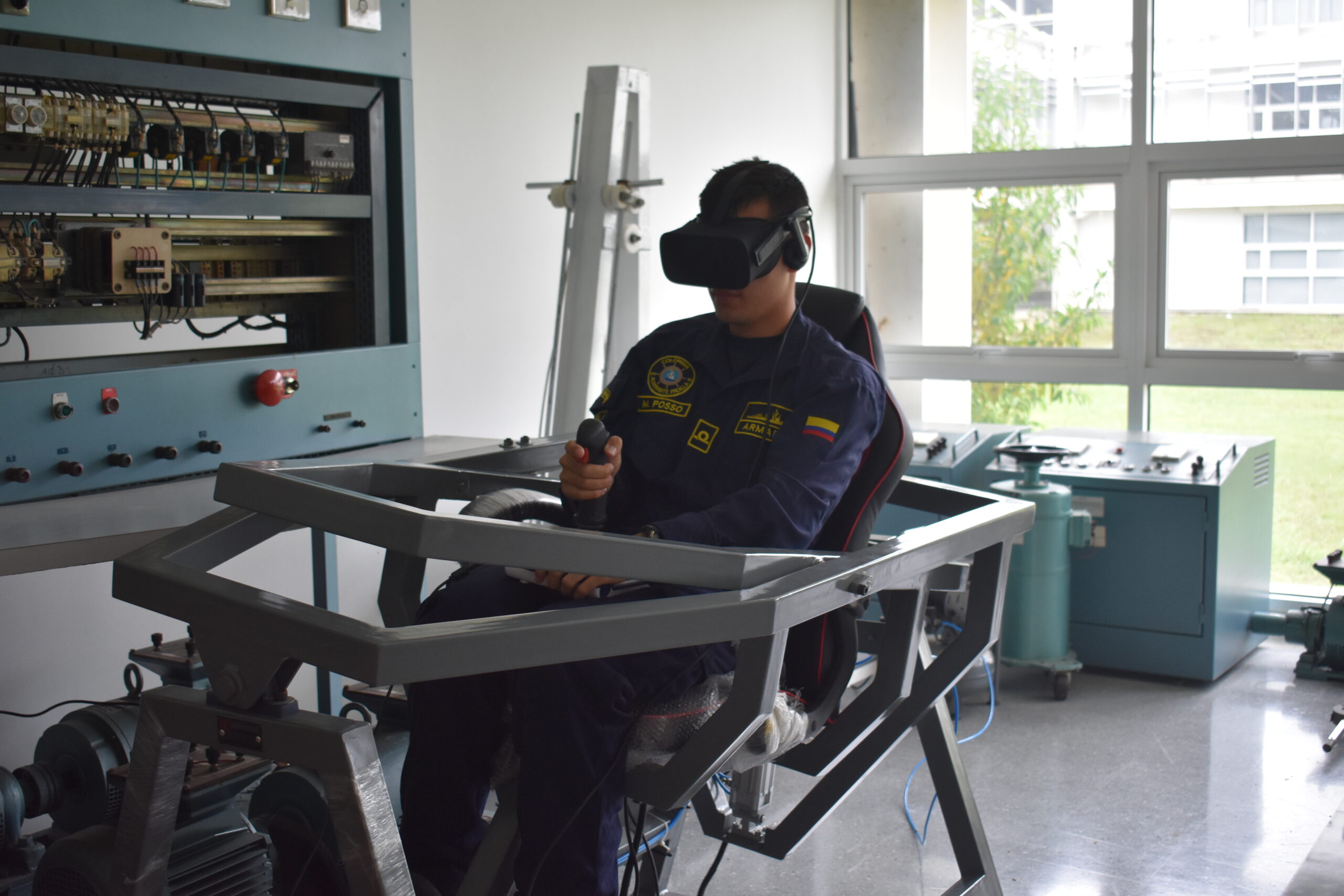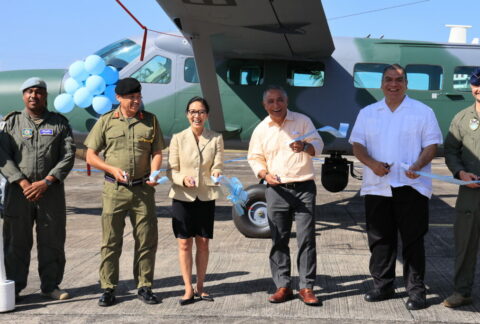Spatial disorientation is among the problems that have troubled the aviation industry for decades, potentially causing pilots to lose control and crash. From the dawn of aviation, the phenomenon has caused thousands of death.
“Pilots who fly over the sea experience this sensation because of the marine weather conditions; the sea and the sky overlap on the horizon and it becomes difficult to identify where one stops and the other begins,” Colombian Navy Captain Alberto Fierro Monje, director of the Colombian Navy’s Naval Aviation School (ESCAN), told Diálogo. “Once you lose references on the ground, you lose that orientation, so what you have to do at that moment is go ahead and believe in flight instruments.”
As such, seeking to train pilots to become aware of spatial disorientation, the scenarios that induce spatial disorientation, and recovery techniques, graduates from the Almirante Padilla Naval Cadet School (ENAP) came up with the idea of creating a prototype flight simulator, also known as a flight training device (FTD).
“At first we opted for the Barany chair, which is a chair that moves; it’s basic, and allows us to understand in a very direct way what disorientation is,” Colombian Navy Lieutenant Commander Mateo Posso Marín, who with Lieutenant Commander Willian Roncallo built the FTD prototype, told Diálogo. “But it’s limited to performing only one type of motion, so we chose to design or create a simulator that had pitch and roll capacity and had the ability to connect with an existing flight simulator and could also work with virtual reality glasses, and to this we added the movements of a platform that with a pneumatic system will recreate the same movements that an aircraft does.”

The prototype combines a simulation software and tools such as sensors, virtual reality glasses, and joystick, which are linked via an electronic system to the chair the graduates designed, in which pitch and roll movements can be carried out with varying angles, managing an inclination of up to 30 degrees, the Navy said in a press release. The prototype will be delivered to the ESCAN to support the pilot training programs, and due to its compact design, will be easily transported to different areas where the naval institution might need it.
“The novelty or special feature that this project has that the officers of the Naval Cadet School have developed, is the use of virtual reality glasses,” said Capt. Fierro. “Currently our Naval Aviation School has some devices, with some flight simulators widely used worldwide, but what stands out most in this initiative of these officers are the virtual reality glasses, which greatly improve some simulation characteristics, in the sense that wherever I look, left, right, it will seem a little more real. It’s closer to what one normally observes when flying, so this is the great advantage of this device.”
Once the FTD is transferred to the ESCAN, it will be used to practice flight procedures under instrument flight rules (IFR), Capt. Fierro said. “Of course, it can contribute to the training of the entire Colombian Armed Forces and, why not, of the military forces of allied countries; it would be done according to their needs, depending on whether or not they have similar devices for training,” Capt. Fierro added. “Through the USCAP [the U.S.-Colombia Action Plan for Regional Security] program, ESCAN is already providing training to member countries in the different programs we have available, taking advantage of the capabilities of our Center for Training and Simulation of Aeromaritime Emergencies –CESEA.”









